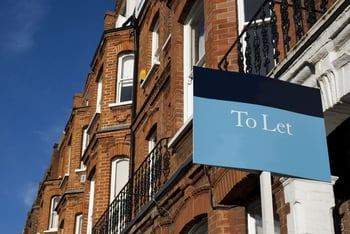 By Lucy Waters - Managing Director for Aria Finance
By Lucy Waters - Managing Director for Aria Finance
For many years, becoming a landlord was viewed by many - rightly or wrongly - as a guaranteed path to riches.
In fairness, it did seem that way for a while, and many of those who snapped up investment properties in the 1990s and 2000s have profited handsomely.
But in recent years, it has become more difficult to turn a profit if you own a property in your own name. This is largely due to higher taxes and a more onerous rulebook, designed by a series of landlord-sceptic administrations.
Throw into the mix soaring interest rates, and you can understand why the mood surrounding buy-to-let (BTL) has soured over the past 18 months.
Some sections of the media have even suggested buy-to-let is on its deathbed - or, at the very least, on life support.
Given that sentiment is a major driver of the UK mortgage market, it's no surprise that lending has tanked as optimism has plunged.
Purchase lending has been particularly affected, slumping 53% year-on-year in 2023, according to UK Finance. The trade body predicts a further 13% contraction this year.
But while lending is down significantly, I can sense a tangible improvement in optimism levels within our industry over the past few months.
We conducted a survey of brokers recently to test current sentiment and were encouraged by the responses. Some 73% of respondents said they expect to write more business in 2024 compared to last year, while buy-to-let was listed as a potential growth area.
Part of the reason for that uplift in sentiment is that conditions are also improving for landlords. For a start, borrowing costs have come down substantially in recent months.
At the time of writing, buy-to-let mortgage rates had fallen to their lowest level since September 2022, according to data firm Moneyfactscompare.co.uk.
Whereas the average 2-year fixed rate at 60% loan-to-value (LTV) was around 6.64% in August last year, it now sits around 5.22%, according to the data.
That's a significant gap, and can mean the difference between a landlord being able to transact or not. Anecdotally, we have certainly noticed more willingness to transact among our client base in recent months.
Reduction in cost
One trend we have noticed recently is that average loan sizes have really increased, which suggests some landlords are looking at deals again that perhaps they couldn't get over the line last year.
We are also starting to see more portfolio lends, blocks, larger value properties and more purchase lending.
For me, that suggests that lower mortgage rates are starting to unclog the market a little. The good news for landlords, and the wider market, is that it's highly likely we will see a further reduction in borrowing costs before the end of the year.
Inflation is expected to reach the Bank of England's 2% target within months, piling pressure on the central bank to cut rates in a bid to boost the economy.
Until that happens, though, activity will remain muted. But when rates do begin to fall, I believe we will see the release of pent-up demand and a significant uptick in activity.
Rates aside, there are also plenty of other data points that suggest that the buy-to-let market is a lot more resilient than people often give credit for.
For example, there are currently more than 1.98 million BTL mortgages outstanding, which is only around 79,300 less than its peak in November 2022.
Some may point to the fact that this is a downward trend, but nearly three-quarters of landlord sales in 2022 - the last year we have data for - were by those retiring, according to Hamptons.
Parts of the media have suggested that we are witnessing a landlord exodus because they feel buy-to-let simply isn't worth it anymore.
Instead, what we're seeing is simply that those who bought properties in the 90's and 2000s are retiring.
We have also seen a huge number of landlords shift their portfolios into a limited company structure to shield themselves from tax.
According to Hamptons, a record 50,000 did this last year, taking the total to more than 345,000. These companies now hold more than 615,000 properties across England and Wales.
To me, this doesn't sound like a market in retreat. It sounds like a market, like any other, that has gone through a difficult spell, but one that is adapting and will come through it stronger.
I have always said that landlords are a resilient bunch. Most treat their portfolios as a business, and with any business, these periods come and go.
But it feels as though the market is over the worst, and green shoots are beginning to emerge. If I'm right, then hopefully the doom and gloom surrounding buy-to-let will subside, and we can start to move forward in a positive fashion.
Published - The Intermediary March 2024







